“What is your favorite aviation marketing tool?”
Six professionals, including an educator, copywriter, aircraft values expert, two consultants, a marketing director explain their favorites and why they can’t live without them!
Debbie Murphy, David Pearl, Mickey Gamonal, Jeremy Cox, & John & Paula Williams share their thoughts on:
- Basecamp
- ManyChat
- Powerpoint
- Canva
- Chat Bots
- The Adobe Suite
Oh, and hats!
Mickey Gamonal:
All right cool. We’re going to get into it. I’m just going to say everybody just follow my lead. Then we’re going to me, Mom, John, Jeremy, David, Deborah.
Paula Williams:
Okay.
Mickey Gamonal:
All right. My name is Mickey Gamonal. I am in Gamonal Tutors, and I’m currently launching the ASVAB Domination project. If you’re getting into the military and you want to get your best score into that military at a high level, you want to go through ASVAB Domination. My hat today is my Peace Corps hat. I’ve got a lot of Peace Corps pride. I was in Morocco for two years, and it was a life changing, altering event. That’s where my hat comes from.
Paula Williams:
My story of my hat isn’t quite so good as all that. I didn’t spend two years in morocco, but we did go see Mickey when he was there. My hat is a Larry Mahan. It is not a Stetson, but I got it two years ago when we had our storytelling festival in Sundance, Utah, where Robert Redford comes from. That’s what it was for. I also have a not so great western hat that I wear for hiking and everything else, but it’s all goopy and beat up.
Mickey Gamonal:
Cool, and what do you sell?
Paula Williams:
We own ABCI, Aviation Business Consultants International. We help aviation companies sell more of their products and services.
Mickey Gamonal:
Sweet. Go ahead John.
John Williams:
As everybody knows, I do all the back end stuff for her. This hat I bought in Texas in 1973, so it’s 47 years old. It’s a Stetson, and 7X, at the time that was almost as high as they went. Now they’re up to 15X’s or whatever. Nowadays to get one of these would be around $1500. I just kept it just because.
Paula Williams:
Good grief. Hat inflation.
John Williams:
Right.
Paula Williams:
Is that a 10 gallon hat?
John Williams:
No. Not even.
Paula Williams:
Okay. Five gallon hat.
John Williams:
When you see a 10 gallon hat, you’ll know it.
Mickey Gamonal:
Cool. All right, go ahead Jeremy.
Jeremy Cox:
I’m Jeremy Cox. I am Jet Values Jeremy. If you need an aircraft, or a helicopter, or any kind of aviation equipment appraised, I am your man. I specialize and enjoy appraising aircraft that are not listed by any price guide. However, I will do anything, including price guide airplanes. So far this year I’ve done 41 appraisals, so I’m busy this year. My hat went to Billings, Montana in 2010, went to Rand’s custom hats, they measured my head with a special hat shaped measuring thing that they put a piece of paper in the crown, close the latch on it. You put it on your head, it actually maps the shape and size of your head. Over the years I’ve had them make me four hats. I love them they’re phenomenal. This is the Tom Mix[inaudible 00:03:39]hat. This is from a famous gunslinger of the movies from the 1950s, ’40s, ’50s. This is the Tom Mix hat. There you go. Dave.
David Pearl:
Yes, hello. My name is David Pearl. I am now an aviation copywriter. I prefer to think of myself with the term that Paula suggested a week ago, a collaborator. I can write pretty much all things aviation. I come from an aviation background. I was a Navy pilot, and when I got out of the Navy I went into law. Then I was an aviation attorney. I defended airlines and aviation companies in lawsuits. I had a number of trials and so forth, and so I feel like I’ve come back to the light side, having been on the dark side for many years.
Mickey Gamonal:
Fight the man. Yeah.
David Pearl:
It’s a very interesting profession. I’m looking forward to helping aviation companies do anything that they need. I’d like to get into it a little bit more deeply than just a writing assignment. I’d like to collaborate, find out what they want to do, and help them engage with their audience.
As far as the hat, it’s the hat from the U.S.S. Kitty Hawk, an aircraft carrier. I got it when my brother-in-law, who was a captain in the Navy, invited me for a, I guess it’s a dependents cruise. He’s significantly younger. When we went out from Norfolk, went out beyond the territorial limit so that they could do high speed passes. If you’ve never seed a high speed pass, that’s breaking the sound barrier. Watching a plane go faster than the sound barrier over the water you see this wave that trails them. The plane goes past, and then you hear it about three seconds later. It was quite impressive. I didn’t fly planes that could go that fast, so very interesting for me.
Jeremy Cox:
What was it, Dave? Was it an F-14?
David Pearl:
This was an F-18.
Jeremy Cox:
18? No kidding. Awesome.
David Pearl:
I mean, it wasn’t one I was flying. Again, he’s a lot younger than me, and so we went out. He wasn’t flying the plane, but he arranged it for us, and it was very impressive.
Debbie Murphy:
Hi, I’m Debbie Murphy. I’m the VP of Marketing for JetBrokers, and we buy and sell jets. What I do is I do all the marketing material, and deal with social media, and the website, and everything else. My hat, I’m not sure where the straw part came from, but this part came from a friend of mine who’s an anthropologist who I used to work for when I was in college. [crosstalk 00:06:38].
Mickey Gamonal:
Cool.
Paula Williams:
An anthropologist, does it come from a particular time and place, or is that a design that is unique?
Debbie Murphy:
Well this is probably something that just came from Guatemala. That’s what it looks like to me.
Paula Williams:
Yeah. I was going say that looks like a-
Debbie Murphy:
He used to travel all over the world, up in Tibet. This is in the ’80s and the ’70s.
Paula Williams:
How cool.
Debbie Murphy:
He went out with the Tauregs in Africa, all over the place. He’s the most interesting person.
Mickey Gamonal:
Well, right on. I like the diversity. I like that Deborah actually made part of her hat. I think you take the cake in that. That’s cool, or at least placed it anyway. What I really liked about that last round, we’ll just tap whoever’s next.
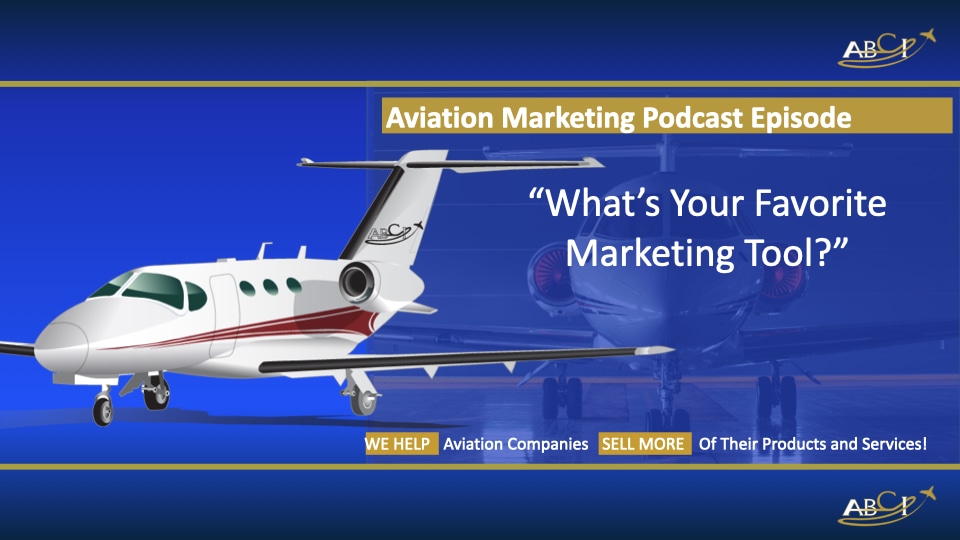
Because Jeremy started it, he was like, “Okay, go ahead David.” Then I’ll say, okay. Whenever you’re done speaking … It’s still a conversation, so if you want to interrupt or anything like that, totally cool. No worries.
John Williams:
How could you stop us interrupting?
Mickey Gamonal:
It’s true. I need a gavel.
Debbie Murphy:
To tell us it’s time up.
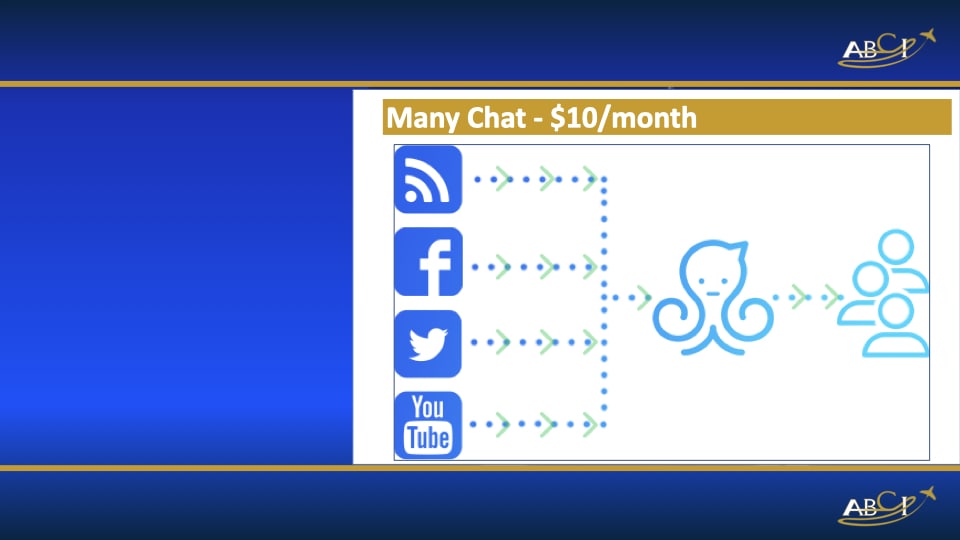
Mickey Gamonal:
All right, cool. The goal of today is to talk about a marketing product or idea that you use that you believe in. I’ll go first. I’m really excited about this one because it’s super broad, and you can kind of talk about anything you want marketing wise that is of value to you, and that you think would be of value to others. That’s great.
My item is called Many Chat. Many Chat is used, it’s an application that you install on your Facebook. Facebook ads are all the rage right now. Of course, not everybody’s on Facebook. Many Chat essentially takes whoever reaches out and messages your page, and it’ll feed them through a filter. If you guys have been in business for a long time, which you all have in one way or another, you realize that you’re asking the same questions over and over again of your potential clients. Maybe, what are you here for? What is the value of the item? Whatever the common questions that you ask, you can go ahead and feed that into your Many Chat, and it’ll let them select whatever answers. You can actually get your clients into boxes.
For me, as an ASVAB tutor, first thing I ask is, are you taking the ASVAB? Are you joining the military? Second thing I ask is, do you have enough time to study? Then I start working them through, what’s your motivation level? Are you willing to invest in tutoring. Whatever list of questions I think I should ask to get them to the ideal client. That’s what I’m doing, I’m shaping up students into knowing exactly what I want from them before I even message them, which is awesome. It’s great to have it going in the background.
I’ve put some money, I put about 20 bucks a day into Facebook ads, and so they just click the link on the Facebook ad and they get delivered into Messenger, and then they go through that filter. It’s saving me a ton of time and a ton of effort. That’s my item. Does anybody have any questions on that one?
Paula Williams:
I know before you started the Many Chat, one of the things that you were doing was a free promotion. You were getting a lot of people that were wasting your time. Do you want to talk about the difference between this and that method?
Mickey Gamonal:
Yeah. Absolutely. I mean, you don’t want to give out freebies, especially as a tutor, but I would imagine as anything. The reason you don’t want to give out freebies is your time becomes worthless. The more free stuff you give out and you give to people, the more they think, “Oh, this isn’t worth anything.” That you’ll be lucky to even get the attention of these people, because there’s so many things competing for everyone’s attention. What you want to do is you want to position yourself into kind of a higher status, at least in my experience. I want to position myself into a higher status so that people want to come work with me, rather than me begging to work with people.
That’s what Many Chat really does, is I’m done with the freebies because they’re not effective. I did three months saying, “Hey, if anybody anywhere needs math help, hit me up.” Everybody needs math help. Everybody sucks at math, but nobody was coming to me. Something was disconnected there. That’s not necessarily an add we can see from Many Chat, but it’s definitely an issue with freebies for sure. I’m very anti-freebies moving forward. I’ll probably never give away anything for free from now on. If anybody asks me for a discount, I’m going to turn around and the first thing I’m going to say is, “Will you give me discounted effort? Because if you’re going to give me discounted effort because I gave you a discounted price, this isn’t going to work.” I don’t want you to half-ass it, for lack of a better term, because you paid me half. That’s ridiculous. That’s my statement on freebies. Does anybody have any questions about Many Chat?
One thing you should know is that it does cost. It is $10 per month, which is kind of a steal. So far I have 30 people in my Many Chat bot, and I’m growing six per day. In the next week that should give me 42. I should have 42 extra students just talking, and they already know who I am, they already know what I want. That’s amazing. That’s way worth $10 to get 42 new students every week.
Paula Williams:
Right. Debbie, I know you’re running Facebook ads as well.
Debbie Murphy:
Yeah, that sounds like something I may have to add to my mix here.
Paula Williams:
Yeah, let’s talk about that next time we talk.
Debbie Murphy:
Yes. I was thinking that.
David Pearl:
Does this allow you to screen your potential clients somehow? Meaning, will most of the people that go through your program, will they have already taken the ASVAB through a high school or something like that?
Mickey Gamonal:
Yeah. One of the questions in my Many Chat bot, and i have it listed as they go through, one of five, two of five, three of five, I think it’s question three is, have you taken the ASVAB before? It’s about a 50/50 breakdown, some of them have. Some of them have but don’t remember it. The majority, like I say, it’s 50/50. I’m not too concerned about what their score is, I’m more concerned about what score they want. I try to keep that focused on the results, what are they trying to get out of it? That helps me when I have my consultation and speak with them about how to get there. Yeah, I think that answered your question.
David Pearl:
Yeah. I’m just thinking back. It never occurred to me that this was something that you prepared for. I took it when I was, I don’t know, I think it was my junior year in high school, it might have been the year later, right before I had to register for the draft. I know that the various score levels you had to have a higher score to go in the Air Force than you did to go into the Army. Other than that, it was not clear why I was taking the test.
Mickey Gamonal:
Yeah. That’s kind of the issue that a lot of students have, is they think, okay this is just going to figure out where I’m at. Then they’ll just take a job like ditch digger for six years because they scored low on the ASVAB. That’s really what I’m trying to combat. I really want 17 year olds to get in as fighter pilots, because then they spend the next six years building a career, rather than digging ditches.
It’s very common, one of the big commonalities is the test isn’t that difficult. It’s kind of maybe an 8th, 9th grade level, but there’s a ton of people, particularly from foreign countries, who want to go into the military for citizenship, who really struggle with either word knowledge, paragraph comprehension. Honestly, the school systems tend to fail people in math too, and critical thinking. They need help in all of the subjects. You need a 30 to get into the military, and a 30 means you’re in the bottom third of everybody who’s taken the test.
You don’t have to be that great to get in, but what I want is people who strive for more. Because a lot of people get into the military trying to get to college, and as soon as they get to college they’re going to smack a wall if they can’t pass the ASVAB. It’s really about building them up for all future success. That’s more my product. Does anybody have anything on Many Chat? Cool
David Pearl:
How does somebody get to you? You’re on Many Chat, but someone goes on Facebook, do they have to say, “I’m really looking for ASVAB stuff.” Do they have to be that focused? How do you get to them?
Mickey Gamonal:
I know Deborah and Mom have been working on Facebook ads, and that’s actually the targeting part. You set up your Facebook ad to speak to people who are interested. My audience currently is for anybody who’s interested in any of the five branches of military, and anybody who’s typed ASVAB into Facebook or Google, so they have an ASVAB interest. With those two things, I get most of the people I want.
If people wanted to come out and find me on my own, they can go to Gamonal Tutors Facebook, and then just type in that.
John Williams:
Facebook’s got, oh I don’t know, it’s a disinterested user’s approach to big data. You don’t have to be a corporation. You can select demographics there, then just go crazy.
Paula Williams:
It’s actually really frightening from a consumer point of view, but it’s great from a marketing point of view.
John Williams:
Yeah. Exactly.
Paula Williams:
Sorry Debbie, I stepped on you.
Debbie Murphy:
You can select your competitors, or other people that are doing similar things to you.
Paula Williams:
Right?
Debbie Murphy:
You’re following them.
John Williams:
Yes.
Mickey Gamonal:
I advocate for, I have a friend who’s another ASVAB tutor, and he’s kind of built something similar to me, but we’re on a conversation basis. I haven’t actually gone through … What I would do if I was out to really go out and dominate right away, because I only need 30 students to launch my project. If I wanted to level the playing field and murder all other ASVAB tutors, I would look into it, because Facebook makes it pretty accessible. You can go in and see exactly what demographics they’re targeting. Then from there you scoop their leads. It’s pretty vicious, but I’m trying to be really Peace Corps and hippie about the whole thing.
Yeah, that’s a few minutes. I don’t want to dwell on Many Chat. Everybody’s got something to add. If you ever have any questions on Many Chat, feel free to personal message me, I’m available for you. Go ahead Mom.
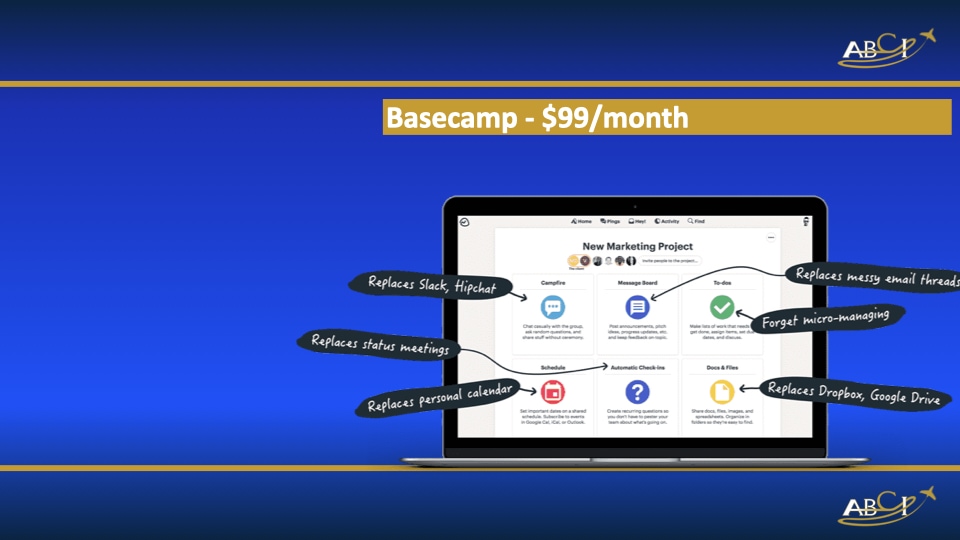
Paula Williams:
Cool. My favorite tool, as most of you know, is something that does something that I hate doing, and something that needs to be done. Most people that fail at marketing usually are failing because they’re failing to do their tasks. They’re failing to get things done. As a project manager, that was what I did before I got into marketing, something that helps you get things done and keep your information organized is really what people are after. Because a lot of times people don’t get things done because they have to go do research, and they have to pull in all this stuff, and they don’t remember what they talked about with their client three weeks ago when they first had this idea. Then somebody else had a thought. All of that stuff doesn’t get combined until later.
What i really love is Basecamp. I know it’s not everybody’s favorite tool. It is a paid tool. It’s about 100 bucks a month, $99 a month, I think for the level that we provide to our clients. Our clients use it for free. A lot of our clients make it their own tool. They start assigning tasks to their own people, using it as an internal tool and things like that. That’s wonderful, because then we just become part of their team. Then we can see what other people are doing that is related to what we’re doing, and everything that we want.
Right now we’re talking about a project with Motive LMS, and they have an idea for a press release, but they don’t want to do it yet. We’re just collecting information into a Basecamp folder. Then when they decide to turn it on, they just assign a task, put in a due date, assign a name, and you’re off and running. It’s 1000 times easier than trying to pull up 15 different emails that are about this topic, and have different attachments and things like that, and trying to get it all together.
Also, I think it gives added value to our clients because that’s how we deliver our reports. We save all of our office hours and everything else as videos, and so it’s got unlimited storage. That’s the difference between Basecamp, and Slack, and things like that, is if you’re using Slack, then you also have to use Dropbox, or Google Docs, or something, and then you have stuff in a million different places. Basecamp lets you put it all in one place. It also has apps for your iPad, and apps for your phone. I even get notifications on my watch when somebody needs something on Basecamp.
I try to tell all of our clients, if you want something immediately, use Basecamp rather than trying to email me, because I’ll never see your email in my monster pile of email. It’ll be three days before I ever see it, but if you send me something in Basecamp, then I will get it right away. Questions about Basecamp? I know Debbie, you use it quite a bit, and Jeremy, you have as well. John hates it. Anybody else have any feelings about Basecamp?
Jeremy Cox:
I’ve got a comment, inasmuch as this may sound like I’m a Luddite, and I’m not in any way going against Basecamp because the times I have used it, it’s been very effective. I’ve used it because you use it, and it does the job. I’ve got to say, I’m not a Microsoft lover by any means. I’m an all Apple platform. However, I’ve got a subscription to Office, like virtually every swinging dick on this planet has. It was genius when they went from buy the software for hundreds of dollars to now pay $100 a year for the rest of your life, which is just outrageous. Anyway. I’ve got to say I am an advocate of OneNote.
Paula Williams:
Really?
Jeremy Cox:
I think OneNote pretty much does what Basecamp does. It’s included with the Office subscription, and you can collaborate with as many people as you want with OneNote. I use it extensively when I’m researching a specific make and model of airplane that I’m appraising. I kind of use it as my notepad. I am old fashioned, I mean I use a notepad. When I’m done it’s required of me to keep a work file, and I actually use my iPhone here and take a picture of my notes and put them in the … I keep electronic files in the iCloud for my airplanes.
I’ve got my work files labeled 2020, and there’s 42 airplanes in there right now because I’m working on a CJ4 at the moment. When I get into something that is kind of outside of my normal cone of experience and knowledge, then I open up OneNote and I start grabbing stuff, and posting it, and it becomes kind of my pin board where I can throw concepts, and ideas, and snippets from the internet and other places. I’ll go through a book, I’ve got a whole library in here of aircraft books, and I’ll grab something and I’ll take a picture with my iPhone, it’ll go up to my photos, and then I’ll go ahead and screenshot it and post it into OneNote. I’ve got an active work file for a specific airplane or project that I’m working on, and it’s all in OneNote.
Like you with Basecamp, I can access it on my laptop, the MacBook. I can access it on my iPad. I can access it on my iPhone. I do have an Apple Watch, but I don’t use it because I think it’s stupid, but I could access it on the Apple Watch as well. I like my Rolex instead. Anyway, so I just wanted to say that. You don’t have to have a subscription. Well, you have to have the $100 a year Microsoft mainline subscription, all of us do, but it’s included with it. OneNote is amazing.
Debbie Murphy:
You can use Google Drive like that.
Jeremy Cox:
Sure. Right.
Debbie Murphy:
I use Google Drive that way, have since forever.
Mickey Gamonal:
Same. I’ve been using Google Drive myself.
Debbie Murphy:
You just have to take something and use that as the depository.
Paula Williams:
Right, and it’s great as a repository, but it doesn’t do the tasks, and the delegation, and the deadlines, and things like that as well I don’t think, as Basecamp does.
Debbie Murphy:
I can see why you use Basecamp when you’re working with us.
Paula Williams:
Right, and OneNote, it’s been a bunch of years since I looked at OneNote. To be fair it was probably 10 years ago, when I tried using OneNote and it just didn’t have the features that we wanted. It has been a long time, so maybe it’s, I’m sure it’s better than it has been. That might be worth looking into if-
Jeremy Cox:
Well, another feature of OneNote, which it takes a little bit of configuration, but it’s pretty effective. It’ll actually, you can speak and type. You can dictate to OneNote, and it’ll … The days of, what is it? One Drago, or Dragon Speak, or Speakeasy Dragon.
Paula Williams:
Oh [Pevins 00:25:44] yeah.
John Williams:
That’s gone.
Debbie Murphy:
WordPerfect?
Jeremy Cox:
Yeah. It’s gone. Yeah. I mean, they’ve all gone, all this virtual speech recognition stuff, but it’s actually in OneNote. Which I don’t use it that often, but if you’re on the run, on the fly, it’s kind of cool
Paula Williams:
Oh yeah. Absolutely.
Mickey Gamonal:
Can I ask about Basecamp?
Paula Williams:
Sure.
Mickey Gamonal:
Just to be clear, it’s used to assign tasks as well as store data, is that correct?
Paula Williams:
Correct.
Mickey Gamonal:
Okay. It helps for a project management kind of deal a lot of the time.
Paula Williams:
Exactly. It can see what I’m behind on, what’s coming up this week. I can look at a task list, and it has all of the files attached to each task.
Mickey Gamonal:
Gotcha.
Paula Williams:
Yeah, which is the-
John Williams:
When you finish, you click finish, and it shows you it’s been nice.
Debbie Murphy:
That’s nice. Also, Jeremy, Google Drive, if you open a doc you can do voice typing in there too.
Jeremy Cox:
Oh really? I didn’t realize that.
Debbie Murphy:
Yeah.
Jeremy Cox:
Interesting.
Debbie Murphy:
I think it’s a newer feature.
Mickey Gamonal:
Oh yeah. I mean, Facebook will type for you too. Anybody. Nowadays it’s almost expected. If you bought a new phone, and it doesn’t listen to your voice and translate your text.
Paula Williams:
Yeah, I don’t know if Basecamp does that or not. I’ll have to look into it. I haven’t thought to do it, but that’s just because I keep using it the way I always have. I need to expand my thinking. That’s part of the reason for this conversation, right?
Mickey Gamonal:
Absolutely.
Paula Williams:
Yeah.
Mickey Gamonal:
Cool. Very cool. Any other questions on Basecamp? Cool. All right. Oh wait, Mom, last thing. Can you tell me how much it costs? How much is your subscription?
Paula Williams:
Our subscription, the retail would be 99 a month, so it is kind of pricey, but we have an unlimited subscription, so what we do is we just make projects for each of our clients, do they don’t have to buy it. Then also we make them administrators of the software, so if you’re on of our clients you can use the software as much as you want. We’ve got an enterprise subscription, so if you are a lab member, you have unlimited usage of that software.
Mickey Gamonal:
Sweet. Very cool, so it’s $100 a year unless you’re your client, and then it’s perks.
Paula Williams:
Right, but you might want to, depending on what you’re doing, if you have a situation where you’re doing project management with clients, you might want to offer them, do an enterprise license and offer that as part of your service.
Mickey Gamonal:
Cool. All right.
Paula Williams:
It’s a whole lot easier than chasing people.
Mickey Gamonal:
True that. All right. Cool. Just had to ask. Thank you.
Paula Williams:
Cool.
Mickey Gamonal:
The price is important I think.
Paula Williams:
Yeah, and it is pricey. It is kind of expensive.
Mickey Gamonal:
Well no, just in general for everybody to mention the price at least. That’s good. Good info. All right, go ahead John.
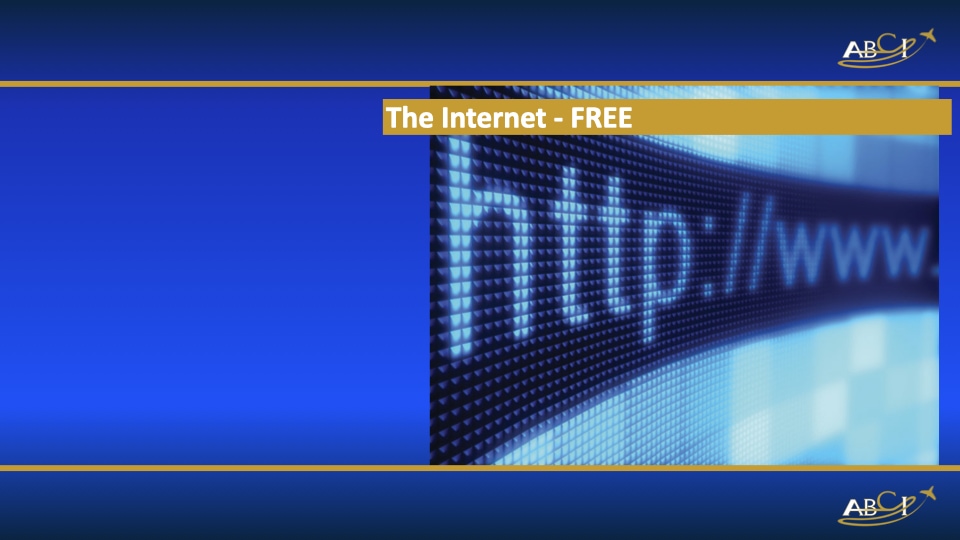
John Williams:
Well, I’ve actually got two, but one of them won’t take much time at all, and it pretty much supersedes what everybody has. It’s called “The Internet.” The greatest marketing tool around. Without it, where would we all be?
Paula Williams:
We’d be working in offices.
Debbie Murphy:
Have to do our jobs we’re doing now.
Jeremy Cox:
Thank goodness Al Gore invented it, right?
John Williams:
Exactly.
Paula Williams:
Otherwise, we’d all be working in offices with filing cabinets and faxing things to each other.
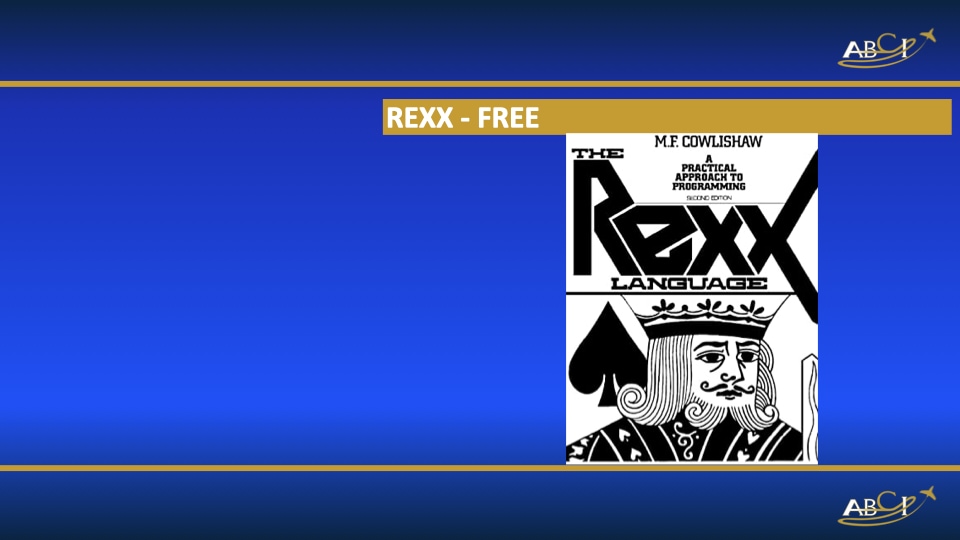
John Williams:
Anyway, this is something I learned to use a bunch of years ago when I was working for IBM. It is a data analysis tool, bar none. I can take anything that you look at, and I can, you have to be able to write basic program and understand nested if statements, but if you want to get into it, I can tell you. Because we do a JETNET export, and we’ve got hundreds of thousands of records. I can look at anything. I can change anything. I can produce anything.
Paula Williams:
If you’re not aware, I mean I’m sure Jeremy and Debbie know this very well, but JETNET is a …
John Williams:
Yeah, it’s got all the data on all aircraft, and FBOs and businesses worldwide.
Paula Williams:
Right. It’s kind of a subscription to the FAA data, except easier to use.
John Williams:
Yeah. It’s more than FAA data.
Debbie Murphy:
Plus they have their own research.
John Williams:
The FAA only handles US stuff. This thing’s got international.
Mickey Gamonal:
Anyway, what is Rexx Language? It’s a language?
John Williams:
Yeah. It’s an interpretive language. It’s pretty inexpensive, I think 60 bucks. You put it on your computer, and you tell it the name of the file you want as input, and then you write plain language statements of what you want it to do, and it’ll do that.
Mickey Gamonal:
What would be a statement? What would you tell it to do?
John Williams:
The simple statement would be, “If this, then that.”
Mickey Gamonal:
Okay.
Paula Williams:
A use case would be, we are looking for all of the FBOs in Florida that are … We get the data from JETNET, and then we get data from some other data broker or something like that, because we want ones that are for sale, as an example.
John Williams:
Or all the ones that have jet fuel, or all the ones that have jet fuel and avgas, or only avgas.
Mickey Gamonal:
Sweet.
John Williams:
I mean, anything you want. It’s crazy. Then you can then take that data and make your own report in any way you want to do it. It’ll write it out in the format you want.
Debbie Murphy:
Pretty useful tool.
Jeremy Cox:
Don’t hate me for this. I sound like this crazy Microsoft person, and I’m really not a disciple of the vaccine master, Mr. Gates, but what could I say? It sounds to me like you can actually do what your program’s doing in Excel, and I do that in Excel.
John Williams:
No, you can’t actually.
Jeremy Cox:
Really? Okay.
John Williams:
Yeah, you can’t. You can do some basic stuff in Excel. Excels is very basic compared to what this does. This thing goes extreme. It depends on what you want to do with it.
Jeremy Cox:
I’ve got Amstat, the brand X, as opposed to brand Y, which is JETNET. I export directly out of that into Excel. The issue with Excel, in my mind, is not the capability of the software program, Excel itself, it’s the capability of the user.
John Williams:
Same way with Rexx.
Jeremy Cox:
There is so much you can do with Excel, you just need to understand how to use it. It boggles my mind every time. I use Excel every day, unfortunately, because it’s the basis of my appraisals. I take eight comparative sales, recent sales, in fact I’m doing a CJ4 at the moment, which is a retrospective, and the effective date is February 2014. It just, I put eight comparative sales from back in 2014 on it, and that’s how I come up with my value.
John Williams:
Sure, I understand. Rexx also takes non textual data and can convert it to text.
Jeremy Cox:
Got it.
John Williams:
Then you can manipulate it.
Paula Williams:
Right, and John uses Excel every single day as well, but he uses Rexx once a week.
Debbie Murphy:
I always thought Microsoft products are set up so that everybody can use them, but if you want to do something really specific sometimes you need to use a more, a tool.
John Williams:
Yeah, it’s very specific.
Debbie Murphy:
A tool you can manipulate yourself better.
John Williams:
Once you write a program, then you can take the same data in from any source and it’ll just punch it right out the way you want it. Anyway.
Debbie Murphy:
Sounds like a good tool.
John Williams:
Well, it is. We’ve done a lot of analysis on data for our company, and I’ve used that to create certain reports for her to do that.
Jeremy Cox:
R-E-X-X language, I am going to look that up, and I am going to see if it’s something that I should do. Brilliant.
Paula Williams:
You can set up reports that you would use, things that you do multiple times. Jeremy, I guess I could see if you had a set of problems that you use for each appraisal, you could set up a Rexx program to just run for you and give you the data you need.
Jeremy Cox:
Interesting.
John Williams:
It’s not for the faint hearted.
Paula Williams:
You have to be super nerdy.
Debbie Murphy:
Right. You have to like being super nerdy.
Mickey Gamonal:
Well, business in general isn’t for people who get squeamish, right? This is for the people who are sticking to their guns.
John Williams:
As an example, when I first got introduced to it, I was working on a contract for IBM. We were taking data from dissimilar devices as input to this machine and creating records for network management.
Mickey Gamonal:
Yeah. That’s ahead of its time for sure. Now everything’s connected, but back then [crosstalk 00:35:37].
John Williams:
Yeah, we had to connect it ourselves. Well, you think everything’s connected right now, but it’s not really. [crosstalk 00:35:45].
Debbie Murphy:
Decided to connect it better.
Paula Williams:
Yeah.
John Williams:
It’s much better now. Anyway, that’s it.
Mickey Gamonal:
Okay. Thanks. Go ahead Jeremy.
Jeremy Cox:
All right, so I don’t mean to be devil’s advocate.
John Williams:
Of course, you do.
Paula Williams:
You always do a good job of that.
Debbie Murphy:
You love to be a devil’s advocate.
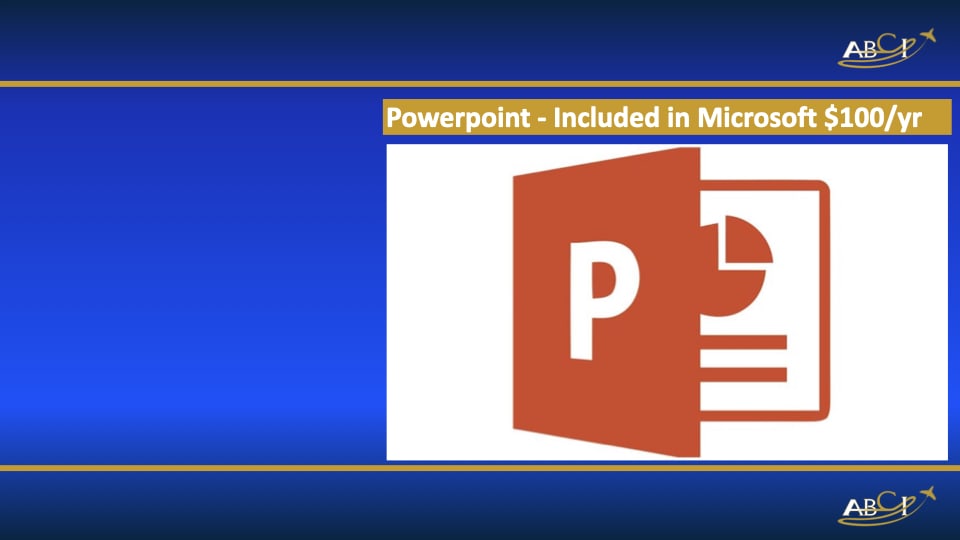
Jeremy Cox:
We’ve been talking about Microsoft stuff, and this is truly embarrassing, but the greatest marketing tool that I use, well I probably use it twice a month. I’ve got my ad campaign, or my flyers, a lot of you have seen my flyers, and I try and set up five weeks in advance. I list them all in my Excel program, I decide what I’m going to put out on a specific date. I always send out a Constant Contact email on a Monday and a Thursday, and I’ve been expanding my advertising a little bit, and I’m finding globalair.com is doing a really good job at getting me appraisal work. There’s a in flight magazine I just started advertising in. I was in Traderplace, but they ceased to exist, now they’re purely online.
I try and maintain my tickling message to everybody through Constant Contact on Mondays and Thursdays, but the key to this is how I create my ads. I create my ads, and I’ve been using this to create flyers, and ads, and all sorts of things, as long as I’ve had Microsoft Office, and that’s PowerPoint. I absolutely love PowerPoint. Now, a lot of people use and they’re great advocates for proper, I don’t know, proper programs that do this stuff, but you can pretty much create anything in PowerPoint, and then export it as a JPEG, a bitmap, or a GIF, or whatever.
In fact, in this CJ4 appraisal I’m doing, it’s a retrospective, so I have the retail value history, which I screen shotted, pasted it into my PowerPoint, and then I created a little graphic that points to first quarter 2014 and it says, “Q1, 2014.” Then exported that as a JPEG, it’s now in my appraisal report. It just is fabulous.
My greatest tool, marketing tool that I use at least twice a month, sometimes more, is PowerPoint. I love PowerPoint. I’ve got another one, which I’ll you really quickly. Then if you guys have got anything to throw out about PowerPoint.
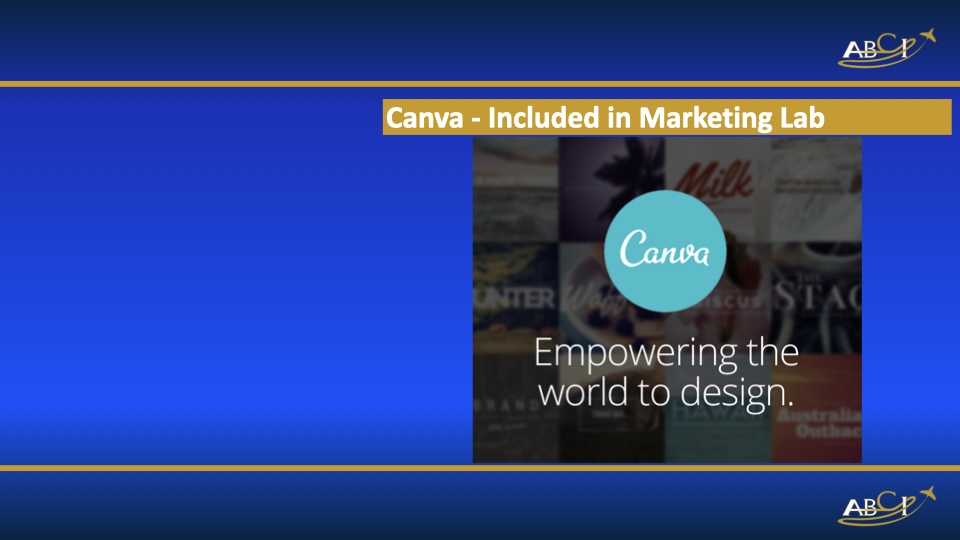
June 9th is when I started my trial subscription, and July 9th is when my credit card will be billed. It’s $119, 40 cents a year, and that is for Canva.com, C-A-N-V-A.com. I actually participated in a webinar, it was a machinery and technical appraiser’s webinar from Northern California back on June 9th, and they talked about this. Like we are today, throwing these tools out, and I’m looking them each up. I’ve got three screens here, which you can’t see, but my right side is my internet screen. On the left is my email screen, and the center one is my workspace. I go over here, I’ve got Canva.com pulled up. It blows my mind.
I’ve used PowerPoint to create very basic infographics, but oh my goodness, Canva.com, I created an awesome infographic a little over a week ago, and you may have seen it. I sent it out as a direct mail.
Paula Williams:
Yes. I saw that.
Jeremy Cox:
This is the infographic, I created that with Canva.com. I also created a newsletter, which is a first edition, which I’m going to try and send out every month, from Canva.com. It’s got everything, and it’s less than 120 bucks a year. It’s mind blowing.
Paula Williams:
You get it for free as a member though, Jeremy. I just didn’t know you wanted it.
Jeremy Cox:
I didn’t know. It’s okay. I don’t mind paying.
Paula Williams:
Oh, for heaven’s sake, what does that do the account? Because everybody else on this call is using it for free.
Jeremy Cox:
Oh wow. Well, there you go. That’s the second best tool that I’ve just recently discovered, and I love it. It’s fantastic.
Paula Williams:
Fantastic. Great.
Debbie Murphy:
One of the things that’s good about it is that it can size the graphic appropriately for the social media type that you’re using. Because if you don’t size it the size that they expect for Facebook, or Twitter, you don’t see part of the graphic. Canva is really good with that, because you can pick the right sizes.
Paula Williams:
Saves you a lot of time that way.
Mickey Gamonal:
I agree, it gives a very professional look. That’s cool. I never would have pegged Jeremy to come with design on both. PowerPoint and Canva, that’s awesome. That’s great. I’ve seen your flyers, and your flyers are really good. I just didn’t know you did them yourself. They’re solid.
Jeremy Cox:
I do.
John Williams:
How much do you get paid from Microsoft every time you say PowerPoint?
Jeremy Cox:
Hopefully my payment will be I won’t be forced to take the vaccine and chip.
Mickey Gamonal:
There you go.
Debbie Murphy:
PowerPoint’s better than Microsoft Publisher.
Paula Williams:
Yeah.
Debbie Murphy:
Which I hate.
Paula Williams:
Publisher went away. I’ve got a whole bunch of documents we can’t use anymore because we had to recreate them in something else. It’s insane.
Jeremy Cox:
That’s what I was trying to think of when I said other programs other people like to use, and I couldn’t remember. Yeah, it’s Publisher. I tried using it one time, I couldn’t get my head around it. I’m a PowerPoint guy. I’m sorry, but it works.
Mickey Gamonal:
Yeah. There’s Photoshop and Adobe, but I think PowerPoint is surprisingly user friendly for how long it’s been around. It’s pretty impressive that they’ve been able to be that useful for that long. I think Canva might be the antidote to that, but still I think in conjunction that’s great. That’s cool.
Debbie Murphy:
Even Google Slide you can do. A lot of the stuff you could do in PowerPoint, you can do in Google Drive and Google Slides for free.
Mickey Gamonal:
That’s true. Perfect. Any questions on Canva or PowerPoint? Everybody’s good with that one. Nobody can … Cool. All right, go ahead Debbie. I think it’s on you.
Paula Williams:
It was Dave I think next.
Mickey Gamonal:
David, my mistake. You’re right.
David Pearl:
Was it David?
Mickey Gamonal:
It’s set wrong, but you had it right.
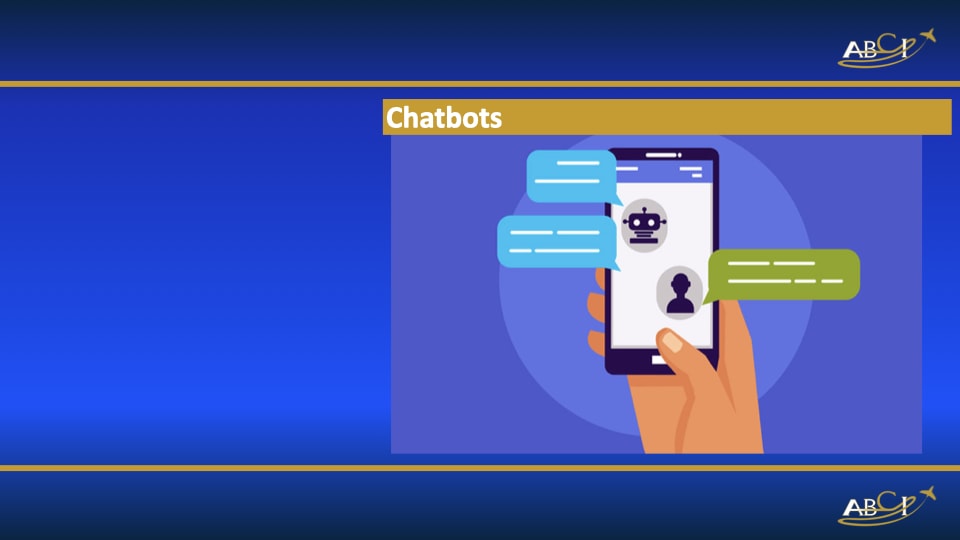
David Pearl:
Okay. Well I have to say I’ve been a little bit silent here because I feel like I’m sitting in the back of the room. I’m not as knowledgeable about these marketing platforms. For many years I guess the digital side of things was something that my secretaries or paralegals did, and I wasn’t too involved with that. Recently I’ve tried to get myself a little bit more up to speed on those things and learn things. I feel like I’m probably still in the cassette world when everybody else is streaming things, but I am bringing myself more up to speed.
I like to use that analogy of music because I’m still old enough to remember putting records on a record player, and I know that my kids maybe saw me do that once or twice, but they get everything directly through a streaming service, which they’ve shown me how to do. I think as marketers we have to be thinking in terms of what does our target audience use? We’re getting younger, and so we have to use marketing platforms that are going to appeal to them, even if we’re not as comfortable with them, we have to upgrade to that.
Along those lines, my research, my studies, I’m excited about something that’s called chatbots. Chatbots are a way that someone using a smartphone can simply do everything that they want to do at one stop. I’m about to embark upon a training course to show me how to write I guess the process for that. It excites me. The results are otherworldly right now. Open rates for chatbots is about 80%, and conversion rates is about 65%. If somebody’s doing marketing right now, I think this is something they need to seriously consider. Even the more stayed world of aviation business, which I come from a world of lawyers, and we worked with bankers, and insurance reps, those are not really cutting edge people as far as the digital world is concerned, but we’re in a situation now where digital is almost our only way of reaching out to clients right now.
What we’re doing right now, we’re not able to do the face to face, and we’re not real certain when face to face is going to come back. I think it’s going to benefit all of us to be mindful of the things that are going to work with the target audiences out there. I’m certainly not thinking that a 58 year old CEO is going to be real comfortable with chatbots at first, but if that’s the only way for him to get the message for his company out to prospective clients, then I think he’s going to be willing to try it.
Again, the results are very promising right now. That’s my thought. Can I answer specific questions about how chatbots work? I can give you something basic, but it’s pretty much something that I will have just read. I’m not an expert in it, but it’s certainly something that I see as, it’s not a panacea, the solution to every problem, but we have to face the fact that many of our prospective clients are getting information strictly from the smartphone. This is a method, this is a platform that is tied to that. It’s one stop. They can do everything they want to do. They don’t have to go to a different website. Anything that they want to accomplish, the chatbot system takes them right through that. You can start your investigation, and you can buy the product or service at one place. I think that’s going to be very beneficial for all of us.
John Williams:
Since you’re into chatbots, you should probably do a little research on what Facebook did. They had some engineers, they created a chatbot, and they to thinking, “You know, let’s put this on another server and then introduce the two.”
Paula Williams:
The two chatbots.
John Williams:
The two chatbots, right. They did, and you could see, they were watching it, and then it started speeding up, and then it got so fast it wouldn’t even show up on the screen. Then it was driving the CPU beyond 100% on both the servers, so they shut it down. When they looked at what they saw, they were responding so fast they were actually creating a new language between the two of them.
David Pearl:
Yeah. I don’t know where we’re really going.
John Williams:
I know. I mean, you’ll find it an interesting read.
David Pearl:
Yes, but I think if we use the music analogy, I can remember when the cool thing was to have these four foot tall speakers, put them outside the dorm room. That was a real status symbol, something to blast. Now it’s earbuds and things of that type. Things are moving from big to small. I don’t like looking at my phone for a screen, it’s just not comfortable for me. I can’t imagine anybody enjoying a movie on a screen size that small, but-
John Williams:
They do it.
David Pearl:
Right, but markets aren’t trying to reach me. They’re trying to reach my grandkids now. That’s where I think we have to recognize that just because it’s not comfortable for us doesn’t mean it’s not a successful opportunity that we should pursue. I think these chatbots strikes me as a way for us to get things out there and do so very well.
Mickey Gamonal:
I think that’s great. I think it’s really awesome the way that you say it. Because for me, I didn’t know about Many Chat last week either. This is all, everything you’re saying I really agree with what you’re saying and can relate. We’re all constantly learning new things, and we don’t know where this crazy train’s going, but we know it’s going pretty damn quick. If we’re going to be on it, we’ve got to be on it. I think that’s great.
David Pearl:
I mean, when you were talking, Jeremy, I thought, man you could set something up just like that. If they’re interested in it, you take them all the way through the program, and you never have to risk them going somewhere else to get information. It just seems to me something like what you’re doing is perfect for it. Many of the things that us and our clients, I’m thinking about once I know how to do it, I want to put people in. If they want to use my services, I’m thinking I’ll put that right, they can access it however the appropriate way is to do that, and we can get something set up if they want me to write something, create some type of copy, they can do it all from a chatbot. It gives me practice doing it anyway.
Paula Williams:
Right. You know what I love about this group is that, David, you understand that good music is good music, and it doesn’t, whether it’s delivered on a cassette or whether it’s delivered through earbuds, you’re open to that. You understand that the quality behind it is good music, and that is timeless, and it has always been and will always be. Mickey, you implemented something in two weeks. I have never seen anybody never hear of a tool before and then start making money with it in less than two weeks. You’re basically taking those principles and applying them so fast, it’s just insane. In the aviation industry we’re a lot slower than that because we like to test things, and things like that, and we also have a demographic that we need to consider that is older and more risk averse. It is so cool to have all sides in on this discussion. Anyway, I just wanted to express appreciation for that.
Mickey Gamonal:
Cool.
Jeremy Cox:
It’s interesting, because I’m looking at the website, and they’re very nefarious about their pricing. Because it says, “How much do chatbots cost?” It says, “Chatbots can vary in price pretty drastically, depending on the level of functionality, placement of the bot and the type of chatbot. These powerful little pieces of software can be free, or they can be thousands of dollars of custom development every month.” I’m thinking, woo hoo, so they’re saying a platform could cost between $9 and $1000 a month. How much you paying, Dave?
David Pearl:
Well, right now I’m not paying anything, I’m learning how to do it. As far as setting one up, they suggest if you’re working for a client, to set them up for chatbot service depending on how many, you start around $1000 to set it up, but then it’s set and let go. It’s not monitoring all the way through. The idea would be, how are you going to reach your clients? Are you going to do it through a printed circular?
I’m sure that some aviation companies are still reaching out to people that go to trade shows and so forth, and they send them something via snail mail. Probably more companies are doing it through email. This would be either in addition to or instead of something that you’re already doing. What I like about it is that if you send somebody an email, well then they have to go someplace to do it. If you send them a circular, there’s another step that you don’t have control over.
If they hit your chatbot, and they can follow it all the way through, they don’t have to go anywhere else, it’s instantaneous. As I said, the initial, the statistics that I’ve read, 80% open rate. What’s the open rate for your mail? What’s the open rate for your email? What’s the open rate for other things that you’re doing? I suspect it’s nowhere close to 80%. Then the conversion rate right now at 65%, I think for a mail campaign is it even 3%?
Paula Williams:
Well, and some of that difference in price is, are you buying just the container, or are you buying the copywriting and things like that, that go into the container?
David Pearl:
Yes. My thought, what I’m hoping to do, I’m not trying to do the mechanics of get into the computer. I’m doing the copy, and someone else would install.
Paula Williams:
Do the programming, right.
David Pearl:
Yes. There’s many things I think I can learn, but getting inside the black box, we used to call it FM, I won’t tell you what FM means, John probably knows, that’s what the black box is, but the end was magic. I’m not trying to go into the computer itself and figure out the mechanics of actually getting it on there. I write the series, the questions. It’s pretty much like a flow diagram. If this, then that. You go either direction. Yes, this way. No, somewhere else. You try to anticipate the questions that are going to be asked, and set it up for someone. It’s the script, I guess is that.
Debbie Murphy:
Sounds like a good service.
David Pearl:
That’s something that I think all of us should be aware of. Because whether we want to do it or not, I think that’s what the future’s going to be. For us right now, with COVID-19, people are kind of hunkered down, if we’re not digital now, well maybe when COVID-19 ends we don’t have to be, maybe, but I don’t think we can plan on that being the case. I think a lot of companies that have moved more digital are going to find the advantages of cost and time efficiency to be such that they’re going to want to continue to do it beyond COVID-19. If we’re not positioned to do that, I think we’re falling behind. I don’t think there’s a great risk in becoming more digitalized right now. I think there is a great risk in not doing it.
Mickey Gamonal:
Yeah, absolutely. All right, cool. Well that’s good for now. We’ll skip over questions on that one. Then we’ll switch over to Debbie. Thanks, that was good.
Paula Williams:
That was.
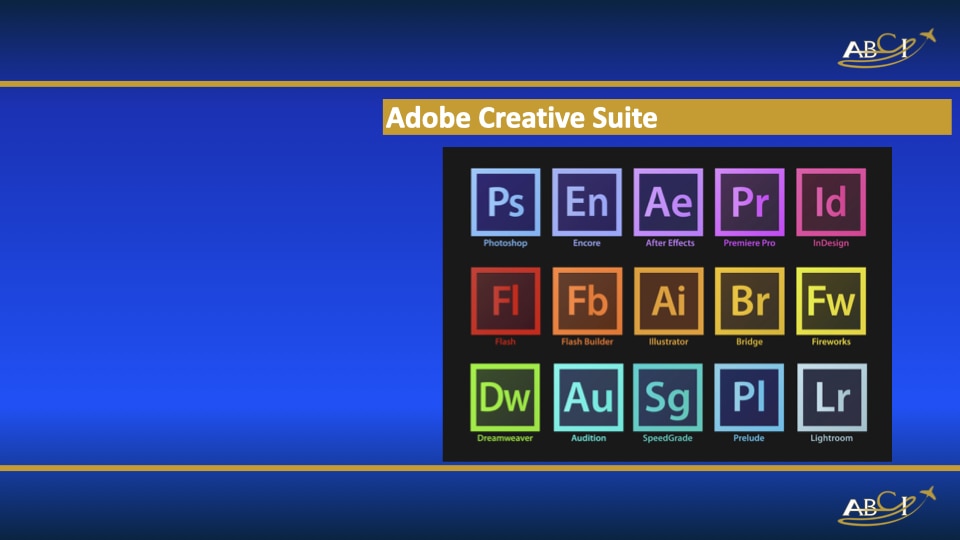
Debbie Murphy:
My tool is the whole Adobe Creative Suite, which includes, Photoshop, Illustrator, InDesign, Premiere Pro, Adobe Acrobat, thousands of fonts. I do the custom branding for JetBrokers, and I create everything from scratch. Even if I pull the data out of Amstat and throw it into … Sorry, turn this off.
Mickey Gamonal:
What was-
Paula Williams:
That’s why we edit.
Mickey Gamonal:
No worries.
Debbie Murphy:
Sorry.
Paula Williams:
No, that’s fine.
Debbie Murphy:
Had to be my phone. I’ll pull information into Excel, and then I’ll dump it into Illustrator.
Mickey Gamonal:
Is it Microsoft Suite, is that what you’re saying?
Debbie Murphy:
No, it’s Adobe. Not Microsoft. It’s Adobe Creative Suite.
Mickey Gamonal:
Okay.
Debbie Murphy:
It’s 52.99 a month, and it includes everything that you could possibly want to do, including Dreamweaver. I make the website with it. I make the videos with it. I edit photographs. I create custom graphics. InDesign also is the print, id you want to create books with it or whatever. You can do any possible professional design function with this suite. I’ve been using it, because I’m old, since the early ’90s.
Paula Williams:
You do the most beautiful charts and graphs I have ever seen.
Debbie Murphy:
They really are customized. I use our particular colors. You can’t really do that in Excel. I enjoy it, plus I have all the actual correct sizes for the different social media graphics that I need already set up. When I go in, I just go in and it’s really, it’s a good flow for me to get all the work done. It exports in any format that you want to export it in, which is super useful. That’s mine.
John Williams:
By the way, compared to some of us, you’re a youngster.
Paula Williams:
Right.
John Williams:
I don’t want to hear it.
Debbie Murphy:
Well I had a big birthday this year. Not going to tell you what it was.
Paula Williams:
Well good for you. I remember using the Adobe Suite years ago, maybe three or four years ago, before it became a subscription. It is the world standard, and it is so powerful, but for me the learning curve is so steep because it is so powerful.
Debbie Murphy:
They have videos that are included, and tutorials that are included with the files.
Paula Williams:
Yeah.
Debbie Murphy:
You can really sit there and teach yourself. I mean, I taught myself how to use it. Because when I first did it, I went to art school, I have an art degree, they did not have it in art school when I went into art school. It was a really new thing. It was really terrible actually when it first came out. It really didn’t do that much. It’s greatly improved.
Mickey Gamonal:
It’s like, do you use pastels, watercolors, or Adobe Suite? They’re telling you how to do sketches.
Debbie Murphy:
I went from being a print maker to using Adobe Suite. It’s great if you do photography. It’s got really amazing ability to edit photography.
Mickey Gamonal:
Great.
Paula Williams:
There’s nothing like Photoshop, nothing on the market like it I don’t think.
Debbie Murphy:
No. It’s still the industry standard.
Jeremy Cox:
I’ll make an analogy. It sounds like Photoshop is in the artistic world the equivalent of fractional share companies in the airplane sales world. They give you access and flexibility like you’ve never had access to before, for a fraction of the price. Sorry.
Mickey Gamonal:
No, that’s great. Cool. Well then we’ll wrap it up, unless anybody has any final word on Adobe Suite.
Debbie Murphy:
I can’t see you. I can’t hear anybody. I’m spinning.
Paula Williams:
Uh-oh.
Mickey Gamonal:
Can you guys hear me?
Paula Williams:
Yes.
John Williams:
I can hear you fine, yeah.
Jeremy Cox:
Can you hear me?
Mickey Gamonal:
Okay, cool. Yup, I can hear you guys. We’ll just do a quick run through. That was good as far as everything goes. Next, a week from now, we’re going to be talking about this book, Never Split The Difference. This is a great book, you guys are going to love it. If you get a chance to even SparkNote it, it’s really cool because it’s written from a CIA operative who did hostage negotiations, and it’s about sales. It’s great.
Paula Williams:
Wow.
Mickey Gamonal:
Exactly. He talks about hostage situations in Haiti and the Philippines, and how he got deployed to do da, da, da. Then, this is how you need to negotiate for a raise with your boss. It’s kind of all over the place, but it’s fun. That’s two weeks from now, so if you get a chance, go ahead and look at that.
This went really well. It did go over on time by quite a bit, but I think that’s because everybody is a professional. Everybody knows we could probably talk about seven other programs that we’ve used to get success. That’s great that we have such a deep bench and a wealth of knowledge here.
Last thing is I have surveys that I’m sending out at the end of book clubs, so if you got a chance, I think Debbie filled it out, and I know Mom has. If you guys get a chance to fill it out, we can make these book clubs better however you want to make them better. That’s the whole intention with those. We’ll do a sign off. I’ll say my name, what I do, and that’s it. Am I missing anything Mom? Is that about right?
Paula Williams:
Yup. Everybody’s going to pitch a product, or service, or your website, or your YouTube channel, or whatever you want to pitch. This is your opportunity to practice your pitch.
Jeremy Cox:
Before we start that, just it occurred to me when Dave was talking about chatbots, and then John came in and said that Facebook put a head to head chatbot program together, or programs together. Until I read this pricing on the website for chatbots, I thought maybe they had wasted the 30 billion euros they spent in CERN, Switzerland for the super collider. You just need two chatbot programs to stand off against each other and you’ll create a black hole, or maybe you’ll create hot fusion of some kind. It sounds to me like that’s the way to go, personally. Anyway, I had to say that. Sorry. Edit that out. I’m just being devious.
Paula Williams:
That’s okay. Which website are you looking at? Are you looking at Many Chat, or some other brand of chatbot?
Jeremy Cox:
I’m looking at chatbots.org.
Paula Williams:
Okay.
Mickey Gamonal:
Cool. No, you’re right, it probably would be a new source of fusion. I mean, a new nuclear development. That’s great.
Paula Williams:
Artificial intelligence.
Mickey Gamonal:
This is some outside of the box stuff!
All right, cool. Pitches. My name is Michael Gamonal, and I am doing the ASVAB Domination Challenge. I’m launching this month, so for now it is $100 to join, and I can get you that ASVAB score that you want inside of that month. If you’re going into the military, you want to enter in as high and prepared as you can.
You should be nervous.
If you’re going into the military, you probably should be nervous and excited, but we want to make sure we channel that energy in the right direction.
Go ahead and hop onto ASVAB Domination by Gamonal Tutors.
Have fun with that.
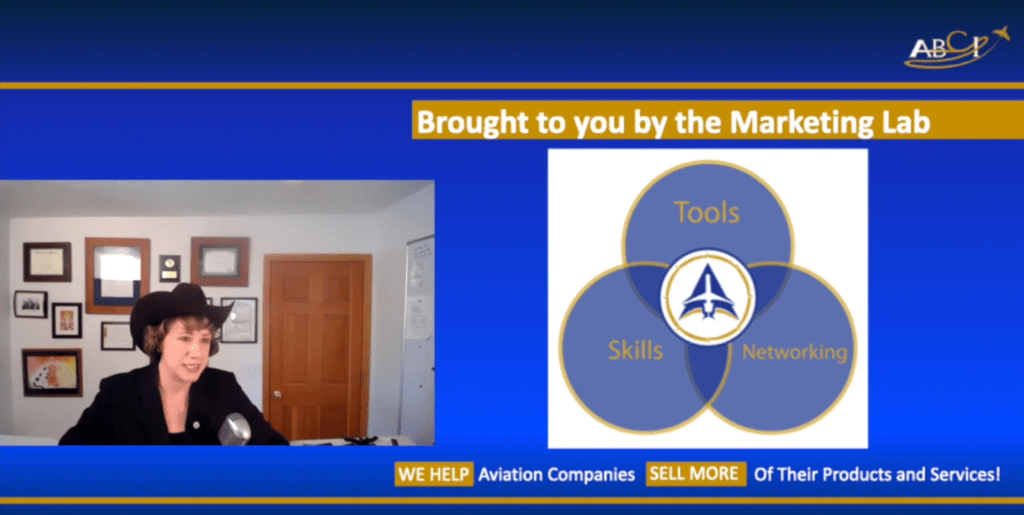
Paula Williams:
Very cool. Paula Williams, ABCI. We help aviation companies sell more of their products and services, and we do whatever it takes to make that happen. Whether that is websites, brochures, trade shows, chatbots, and so on. We do not yet have a chatbot product, but we may end up doing some collaboration with one or more of you guys to get a chatbot product on the market for aviation companies. It sounds like a good direction to go.

John Williams:
John Williams, and ibid what she said.
Mickey Gamonal:
Sweet.
Jeremy Cox:
Jeremy Cox. You have any kind of aviation asset that you need to know what is it worth accurately and credibly, call me. Go to www.jetvaluesjeremy.com.
That’s J-E-T, Jeremy. I’ve got it all screwed up. J-E-T-V-A-L-U-E-S-J-E-R-E-M-Y.com.
I can assist you on pretty much anything that flies.
Thank you.

Mickey Gamonal:
All you David.
David Pearl:
I believe I’m next. Yes. Again, my name is David Pearl, and I’m an aviation copywriter. I’ve got a lot of experience writing all different types of things. If you need help creating copy or content for anything that you want to do, I would love to collaborate with you, to learn as much about your business as you’ll allow me to know, and to write something that’s going to reach out to your clients in an engaging, concise, and powerful way. I aim to educate. I aim to inform, and most of all I am to engage.
I think I could take your vision and execute it through my work.
You can reach me through, I’d say I’m working with Paula and John right now.
I’m not up and running as far as the website, but I will be soon.
If you, or you know someone that needs help getting something written, I think I’m your guy. You can reach me through ABCI.
Debbie Murphy:
Hi, I’m Debbie Murphy. I’m the VP of Marketing for JetBrokers. We help people buy and sell jets. We can be found on YouTube, Instagram, Twitter, Facebook, at JetBrokers, and our website is JetBrokers.com.
Mickey Gamonal:
Cool. Scene. Great job everybody.
Jeremy Cox:
See y’all later.
Paula Williams:
All right. Thank you everybody for being such good sports. This was so much fun.
Debbie Murphy:
Thanks. Have a nice day.
John Williams:
See you next time.
Mickey Gamonal:
Thank you. Take care guys.
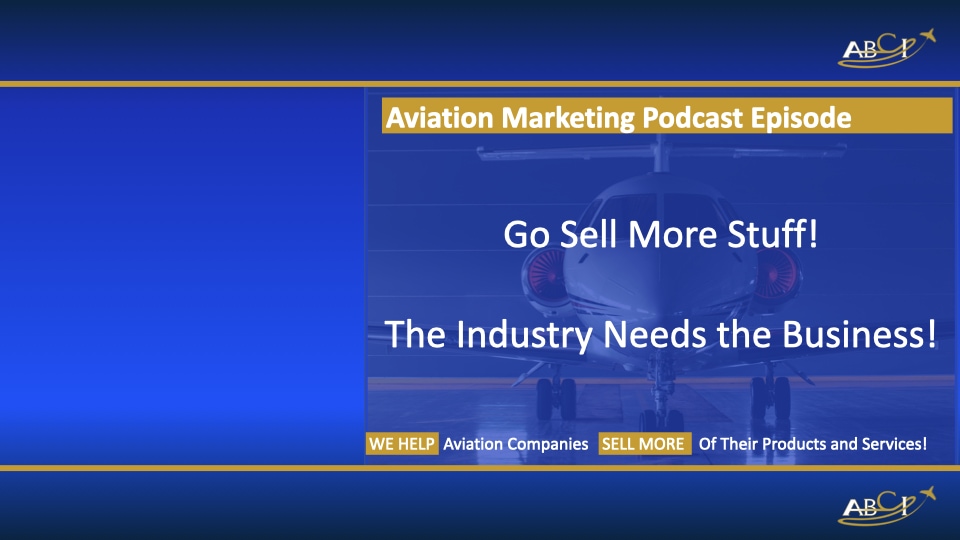
Podcast: Play in new window | Download
Subscribe: Google Podcasts | Spotify | Amazon Music | RSS



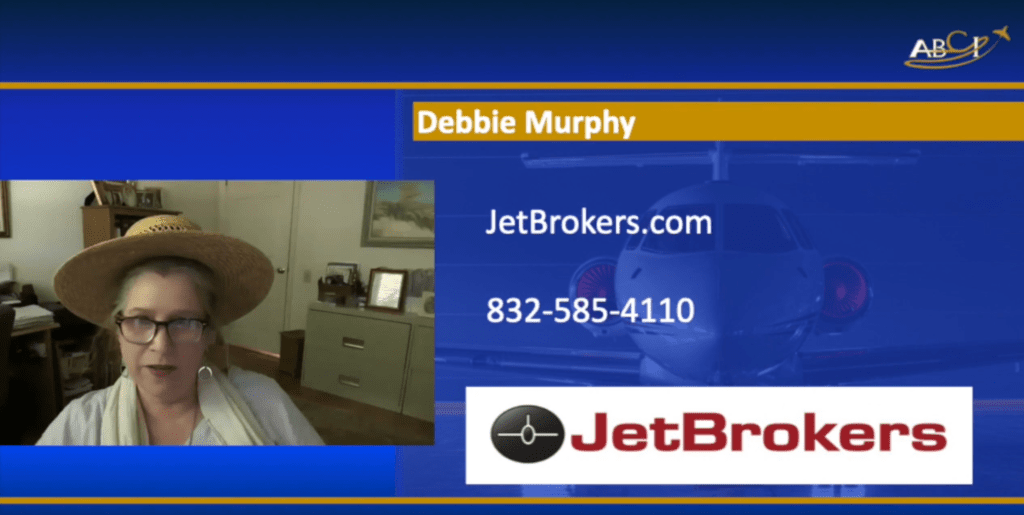





Hi Iam glad to this blog. I wish this good article with list. Actually we need most popular bookmarking site. The article is very important of any digital marketer. I think Fiverr Learn is a fantastic place to start. Thank You !!
Hi Iam glad to this blog.Very important article of any digital marketer. I think Fiverr Learn is a great place to start. Thank you !!
Also I would like to recommend to you a website specializing in utility apps.
Fabulous post! The tips you have mentioned really awesome.
Thank you for your helpful article, I love this type of article.